
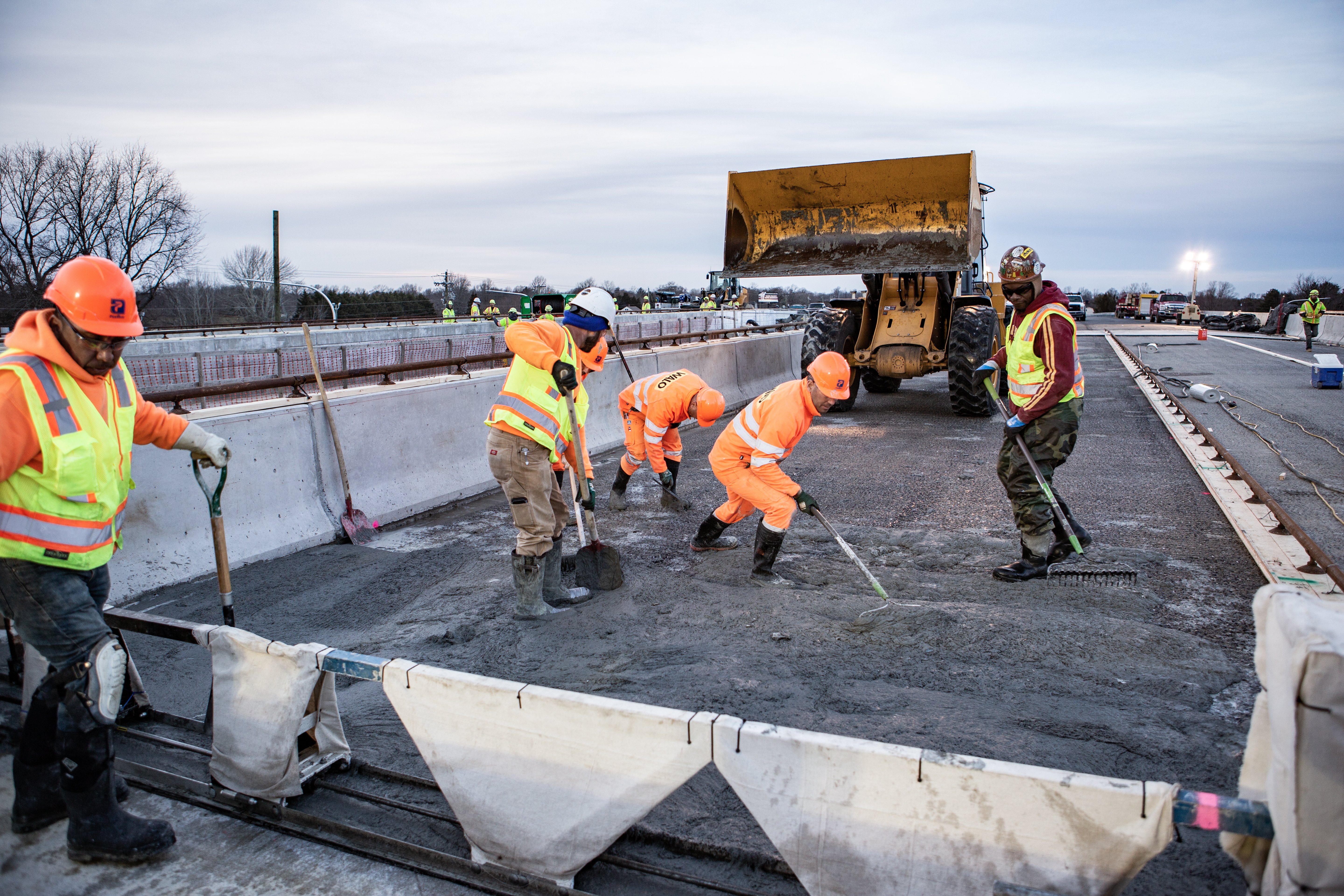
The United States infrastructure and in particular our “crumbling” roads and bridges have been in the national consciousness for several years now. With numerous bridge failures of the past, including those in Italy and Miami, many experts are concerned that the number of structurally deficient bridges in the country has reached a critical point.
According to the American Road & Transportation Builders Association (ARTBA), more than one-third, or 220,000, of the nation’s 618,000 bridges need structural repair, rehabilitation work, or replacement, according to the ARTBA's seventh annual analysis of the latest U.S. DOT’s National Bridge Inventory (NBI) database.
4 out of 10 U.S. bridges need to be replaced or repaired, including 1 in 3 bridges of the 17,643 Interstate highway bridges.
The number of structurally deficient bridges in the US in 2021, if placed end-to-end, would stretch 1,080 miles – the distance between Las Vegas, NV and Seattle, VA.

45,023 of the country’s 618,422 bridges, or approximately 7.3%, are rated “structurally deficient” and considered to be in poor or worse condition according to the ARTBA. Motorists cross these compromised and unsound structures approximately 171.5 million times every day. On average a “structural deficient” bridge is nearly 68 years old, compared to 32 years for a bridge in good condition and 54 years for a bridge in fair condition.
The good news is that the number of “structurally deficient" bridges has declined for the last five years, but at the current pace, it would take nearly 40 years to repair the current backlog of “structurally deficient” bridges.
Even though bridges are being repaired, the pace of repairing, renovating, and replacing the nation’s bridges has been relatively slow. This is due in part to political gridlock, but also because funds are too often diverted to other priorities – the number of bridges with structural deficiencies dropped just 2.5% in 2020.
The rising cost of fixing our bridges is also contributing to the deadlock – and those costs will only continue to grow as our bridges grow older and weaker.
According to the ARTBA’s 2021 Bridge Report, if all “structurally deficient” bridges would be repaired today, it would cost $41.8 billion to repair or replace the 45,023 “structurally deficient” bridges.
In light of these statistics and the rising costs of repairing our infrastructure, experts, bridge agencies, and policymakers are searching for innovative solutions to reduce costs and make our bridges more resilient and long-lasting.
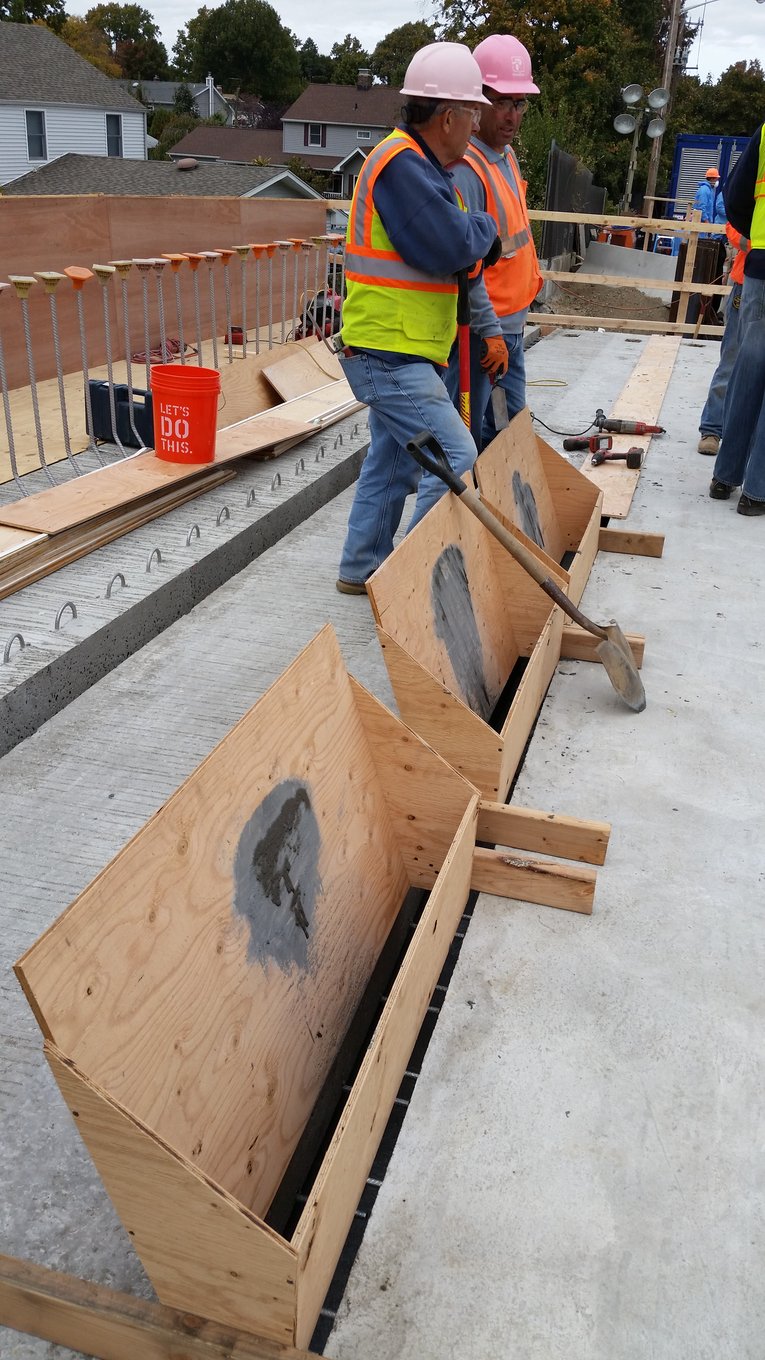
Technically, a “structurally deficient” bridge is still operational. It also does not imply that the bridge is unsafe or that it is likely to fail and collapse. However, there are elements of structurally deficient bridges that need to be repaired or monitored closely for defects.
According to the Congressional Research Service, the public policy research arm of the United States Congress, bridges are considered structurally deficient “if significant load-carrying elements are in poor condition due to deterioration or damage.” They are also considered structurally deficient “if the waterway opening of the bridge causes intolerable roadway traffic interruptions.”
In other words, a structurally deficient bridge may be restricted to light vehicles or closed periodically for rehabilitation and maintenance. Structurally deficient bridges must often have postings about weight restrictions – a common sight on US roadways – and officials will close the bridge immediately if they determine it to be unsafe.
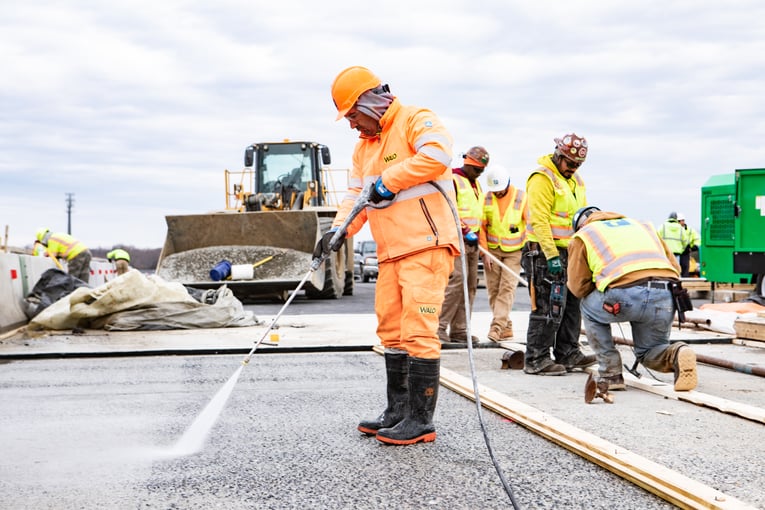
Bridge inspections are governed by both federal and state regulations and guidelines. Although these guidelines may vary state-by-state, federal guidelines and inspection regulations are covered by the National Bridge Inventory Standards (NBIS).
These standards provide regulations, policy, guidance, and additional information regarding the inspection of bridges.
For example, under the “Guidance” section of the NBIS, the standards establish guidelines for the following:
The NBIS sets timeframes for bridge inspections. It requires bridges to be inspected every 24 months, with underwater inspections occurring every 60 months.
Most state Departments of Transportation (DOTs) expand upon the federal guidelines, however, requiring that inspections occur more often than outlined. States typically require inspection personnel to be certified engineers. All inspectors must complete training, and many states require their training to be updated regularly.
DOTs typically use a numbered and color-coded rating system of 0 to 9 to rate bridge integrity. A 9 rating would imply that the bridge is in excellent condition, whereas a 0 rating would imply that the bridge has failed.
The government classifies a bridge as “structurally deficient” if any one of the following bridge components is rated less than or equal to 4 (in poor or worse condition):The general public typically does not know the condition of the bridges they drive over, but certified inspectors can determine whether a bridge needs to have a weight limitation or whether it needs to be closed for repairs or a rebuild.
Challenges facing the US bridge infrastructure stem from various sources, including previous government inaction. Lack of awareness on behalf of the public is also a challenge, as it is the public who could pressure policymakers to act.
However, current initiatives to invest more funds into our nation's infrastructure are underway. These conversations are starting among leaders and policymakers – with broad support from the construction and material producing industries.
But as long as the nation’s infrastructure continues to be neglected, the problem will only become more pronounced and more expensive to fix. Engineers, policymakers, and lawmakers at the state and federal level are searching for solutions in technology and innovation. But a dramatic change in the country’s mindset, as well as policy action, will be necessary to solve the problem.
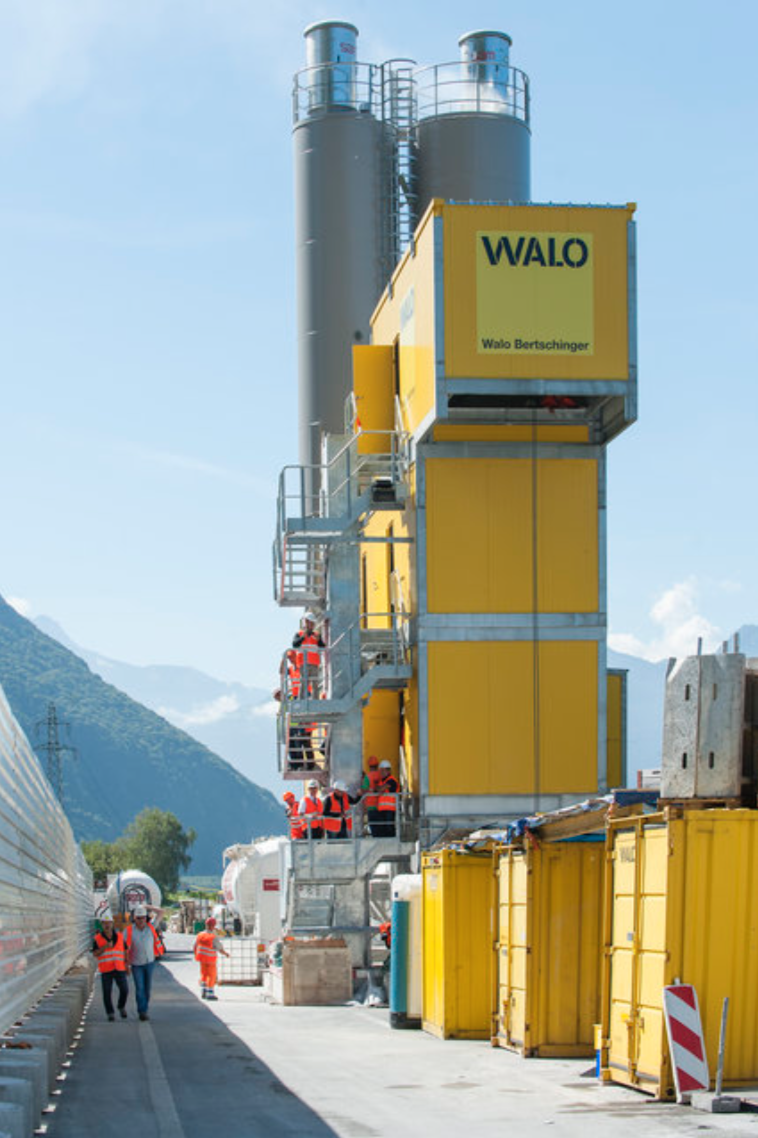
In 2021, the American Society of Civil Engineers (ASCE) gave America’s overall infrastructure a score of C-. The engineers gave the nation’s bridges an overall score of C.
Despite recent increases in infrastructure spending by most states over the past several years, the overall spending in the country’s bridges remains insufficient. The United States faces a $2.59 trillion shortfall in infrastructure needs that requires a massive jump in government spending to address crumbling roads, bridges, and other programs.
According to the most recent federal data, the backlog for the rehabilitation of the nation’s bridges is at least $125 billion. It also estimates that we need to increase spending on bridge rehabilitation from $14.4 billion annually to $22.7 billion annually if we are to improve the condition.
While state and local governments have demonstrated initiative, federal investment in bridges remains stagnant. As a result, the Highway Trust Fund, which historically funds many of the nation’s road and bridge projects, has been teetering on the brink of insolvency for over a decade. The trust fund’s primary funding source is the federal motor fuels tax, which has remained at 18.3 cents per gallon since 1993.
The 2021 ASCE report card recommends increasing funding from all levels of government to continue significant bridge repair, rehabilitation and replacement especially by prioritizing the preservation of bridges in fair condition. These bridges can be repaired at a fraction of the cost of replacement if the work is performed in a timely matter.
In addition to inaction at the policy level, there has been a lack of willingness at the national level to fully address the country’s infrastructure problems. Although most Americans are aware of the concerning state of our nation’s roads and bridges, the issue has taken a backseat.
Thankfully, politicians are currently proposing bills that would provide much-needed funds for the country's infrastructure, where 621 billion will be spent to improve roads, bridges, railways, and other infrastructure within an ambitious $2 trillion plan to overhaul the U.S. infrastructure.
Some in the field have also been unwilling to try new and innovative solutions which have the potential to cut costs and make our bridges more durable. Instead, they are attracted to known solutions, more commonly used in the industry.
Additionally, bridge project agencies, and especially those funding these operations, are often too concerned with short-term goals, rather than the entire lifecycle of the bridges being produced. This is true in terms of costs and in terms of the material being used to construct and repair bridges.
The costs of constructing a new bridge are often justified, but funds are rarely set aside to address that bridge's inevitable maintenance costs several years down the road.
Changes must be made at the policy level, but the culture and general outlook of those who manage construction projects must change as well. Instead of focusing on quick wins, they must adopt a more long-term mentality, taking into consideration repair and rehabilitation stages that occur across the entire lifecycle.
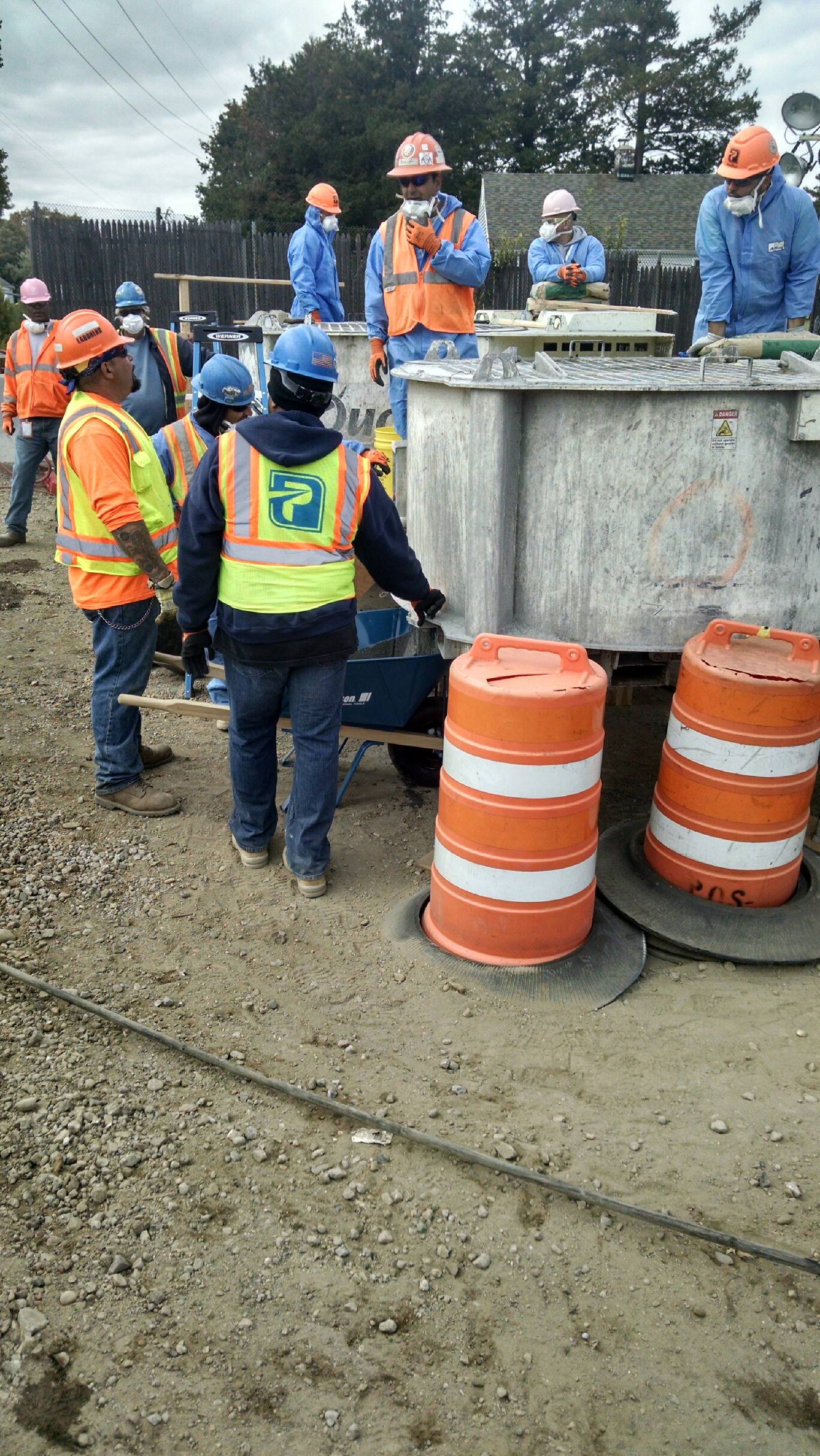
There are multiple emerging and applied technologies that have exciting applications in the restoration of the country’s infrastructure.
Drones make it easier for engineers to spot problems, augmented reality helps planners visualize their projects and technicians to work more effectively. Autonomous vehicles and devices powered by the internet of things (IoT) also show promise in helping bridge construction and repair projects go faster.
But innovative construction materials will also play a major role in restoring and preserving the American infrastructure.
Ultra-High Performance Concrete is a new class of concrete that has been lauded for its strength and durability. Although the material has only seen sporadic use in recent decades, more and more companies and governments are inquiring about its applications due to the infrastructure crisis.
The global Ultra-High Performance Concrete (UHPC) market was valued at US$ 1,133.3 million in 2019 and it is expected to reach US$ 1,805.3 million by the end of 2026, growing at a CAGR of 6.8% during 2021-2026.
According to a 2013 report by the US Department of Transportation Federal Highway Administration (FHWA), “The dense matrix of UHPC prevents deleterious solutions from penetrating into the matrix, and so the mechanisms that can cause conventional concrete to deteriorate are not present. Consequently, durability properties, as measured by permeability tests, freeze-thaw tests, scaling tests, abrasion tests, resistance to ASR, and carbonation, are significantly better than those of conventional concrete.”
The oldest structures built with the material may have only been in place since the late 20th century, but it is showing steady growth and promise in the industry.
The FHWA defines UHPC as “a cementitious composite material composed of an optimized gradation of granular constituents, a water-to-cementitious materials ratio less than 0.25, and a high percentage of discontinuous internal fiber reinforcement.”
The material has a compressive strength greater than 21.7 ksi and has a pore structure that reduces the amount of liquid ingress when compared to regular concrete. This significantly enhances the durability of the material.
Not only can UHPC concrete last at least more than 60 years longer than regular concrete but it has many functional.
Experts in Europe, Asia, and the Americas have all been generating studies and use cases for the product.
According to one 2018 case study, researchers from the Universiti Teknologi PETRONAS, Department of Civil and Environmental Engineering in Perak, Malaysia stated, “One of the primary advantages of UHPC is its excellent durability. Structures made with UHPC will have much longer service life with lower maintenance and repair cost in the future compared to CC or HPC (high-performance concrete) structures.”
Chloride profiles of UHPC exposed to a marine environment for 21 years revealed that chloride penetration occurs to a depth of approximately 0.39 in (10 mm) regardless of exposure duration. It appears chlorides will not be able to penetrate to steel reinforcements at a cover depth of 1 in (25 mm).
Interested in learning more about UHPC? Reach out to talk to one of the leading experts today!
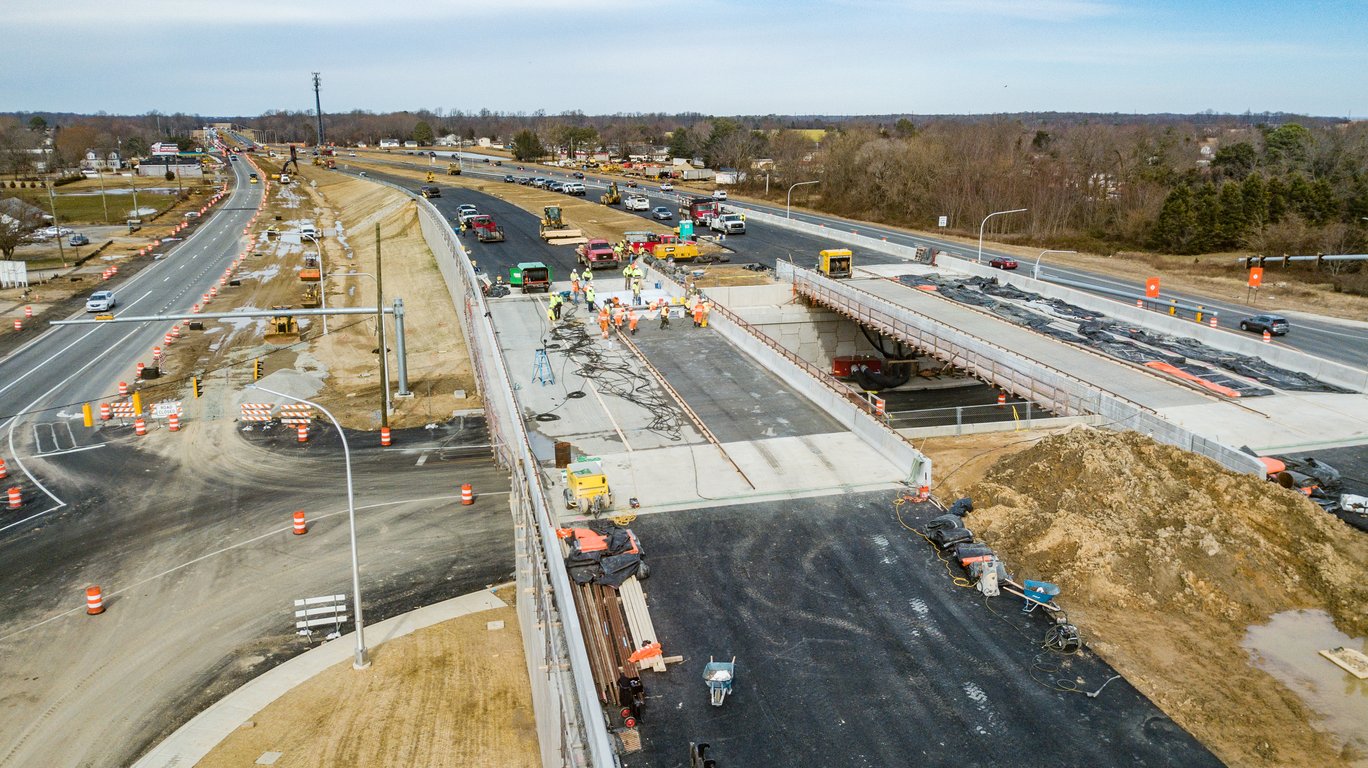
In addition to applying UHPC to new construction projects, the material also holds promise for repair projects, particularly for structurally deficient bridges.
Without fundamentally altering the makeup of deficient bridges, repair crews can instead apply UHPC overlays to existing structures to provide the bridge with the material’s best properties. Even with an overlay, UHPC can take an old bridge and give it a better a better than new a new bridge performance with:
The material bonds well with existing concrete decks and can substantially expand the life cycle of existing infrastructure. UHPC can even be formulated specifically for repair purposes.
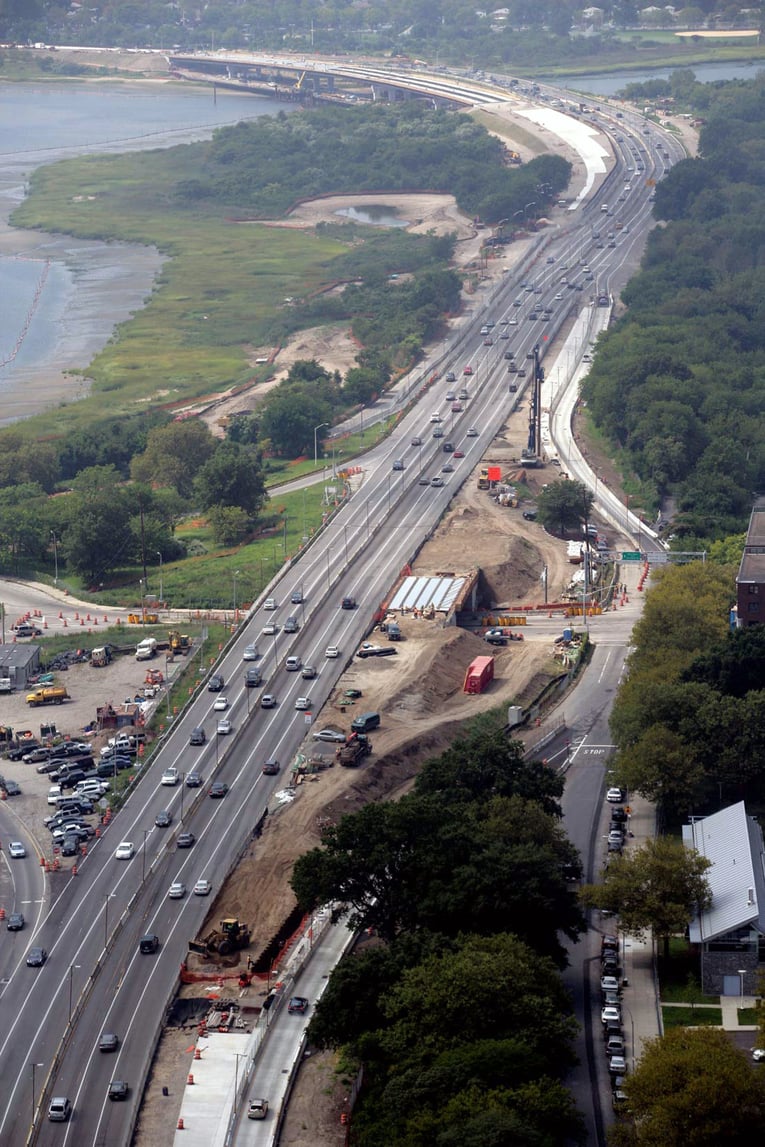
Case studies for UHPC are emerging, and there are already plenty of evidence for its efficacy. Below are a few examples of complete UHPC projects in North America.
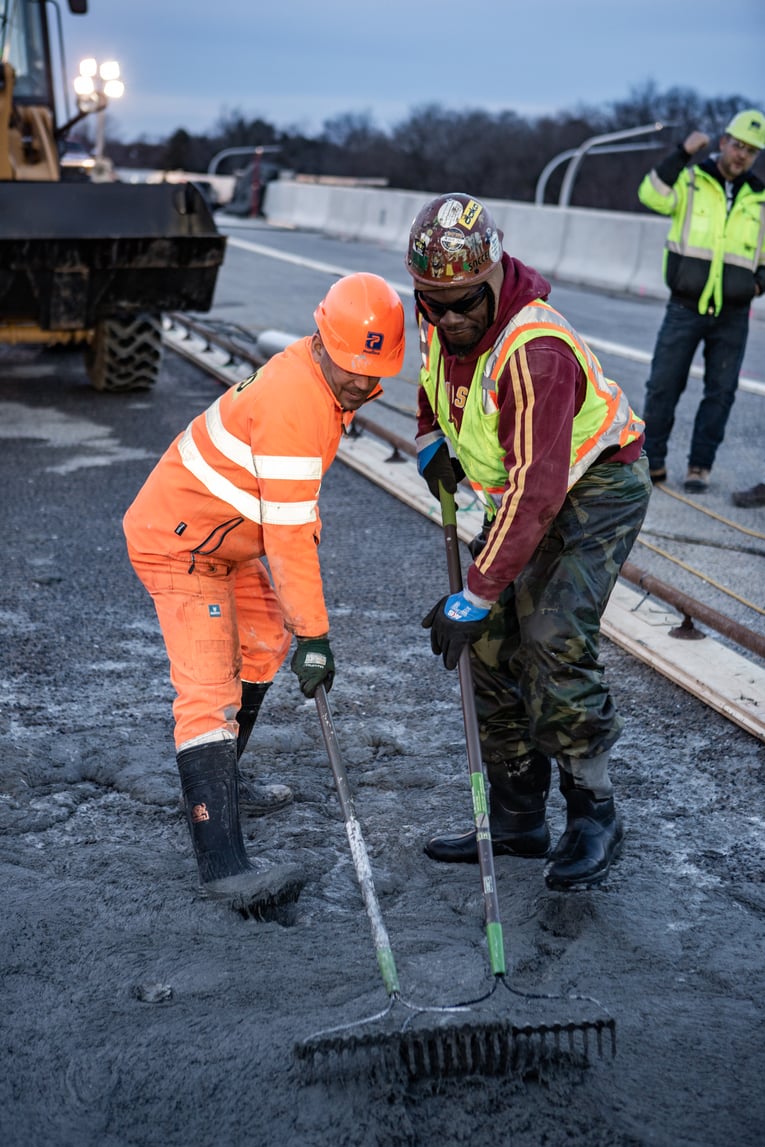
The Canadian National Railway needed an innovative solution to repair a rail bridge pier in Montreal, Quebec due to severe salt ingress. Because the rail bridge crosses over a 2-lane narrow access ramp, the repair cover had to be thin in order to maintain adequate clearance.
The existing concrete was degraded, so it had to be removed. Workers placed a galvanized rebar cage to allow for about 100 mm (4”) of new UHPC to be poured.
A self-leveling formulation of UHPC was used for the repair. Using a relatively small amount of material, the repair job was completed at a minimal cost. This new layer of UHPC will provide protection for the existing bridge structure against future chloride ingress and freeze-thaw
The Hagwilget Bridge in New Hazelton, BC is owned by the British Columbia Ministry of Transportation and Infrastructure. It’s a single-lane suspension bridge with a span of 140 m that hovers 75 m above the water below.
Enhancements and upgrades had been made to the bridge since the 1980s to increase truck-carrying capacity and structural integrity. Modifications were also made to increase resistance against lateral winds and earthquakes.
In this case, UHPC was added to rehabilitate and encase 32 steel bent legs, which had begun to corrode at their base. The UHPC was applied to strengthen the legs’ weak areas and mitigate any further corrosion. The applied material is expected to protect the legs from corrosion and improve the structural integrity for many years.
This 3-span bridge is located on Hooper Road just east of Binghamton, New York. It crosses over Route 17C just east of Binghamton, NY.
In this project, the existing columns would remain while the superstructure was replaced. Additionally, new precast pier caps would need to be connected to the existing pier columns. UHPC was used for the closure pours and link slaps on the superstructure, then used again for the connections of the pier caps. This innovative construction method saved valuable time and money on the project. The entire project was completed in only 21 days.
There is a myriad of use cases for UHPC in the repair, renovation, retrofitting, and new construction of the nation’s bridges. The material allows for greater speed of execution and a more long-lasting structure, which in turn reduces costs dramatically.
There are many challenges facing the successful renovation of the United States infrastructure. While some must be solved at the policy and budgetary level, innovative solutions like UHPC can play a significant role in addressing the nation’s deteriorating bridge infrastructure.
Our highly experienced workforce installs UHPC with cutting-edge equipment for bridge overlays, field cast connections for precast bridge elements, link slabs, shotcrete, and other applications. We have mixed, transported, placed, and installed UHPC for many various projects across multiple States. To find innovative and cost-effective solutions for your next preservation project, contact our experienced UHPC expert today!
